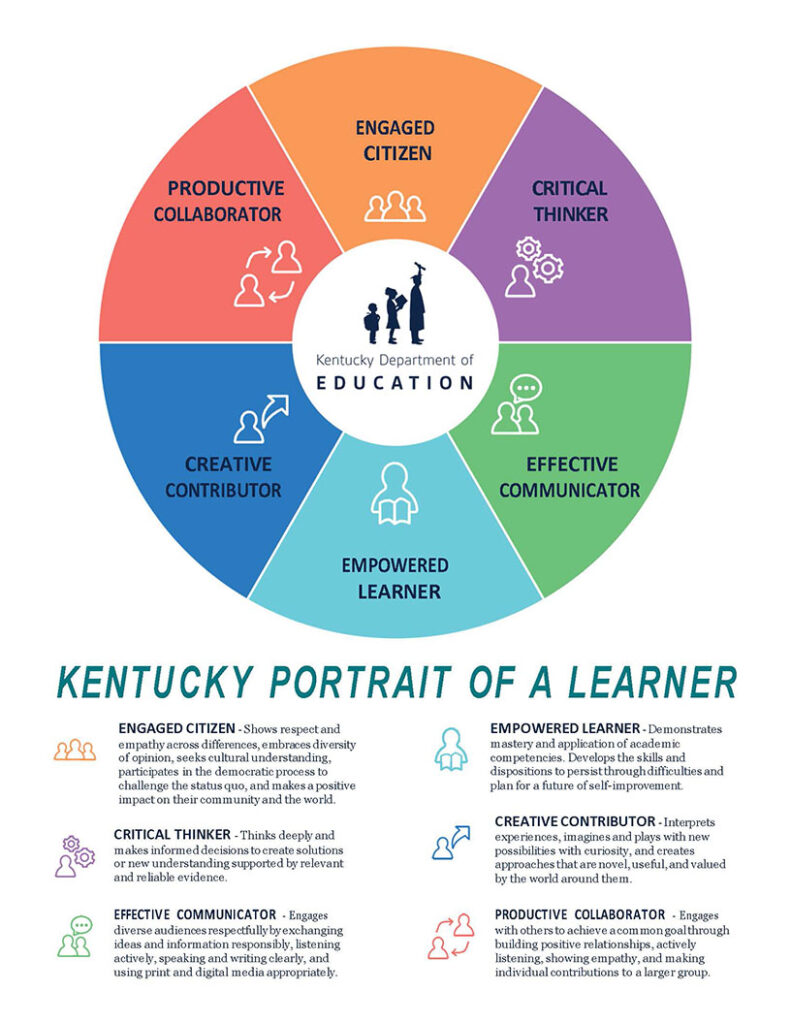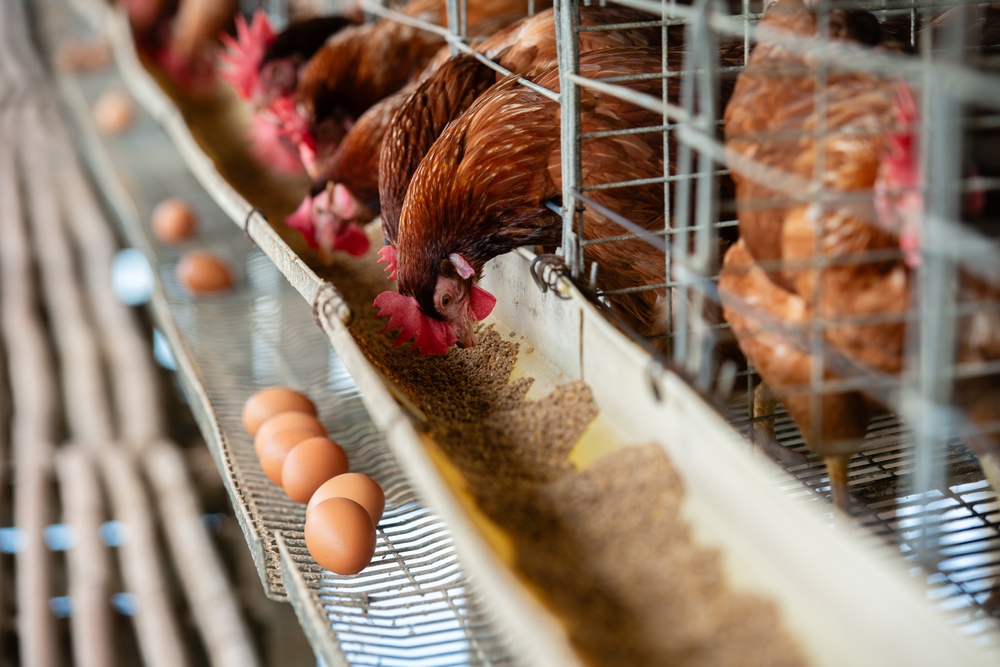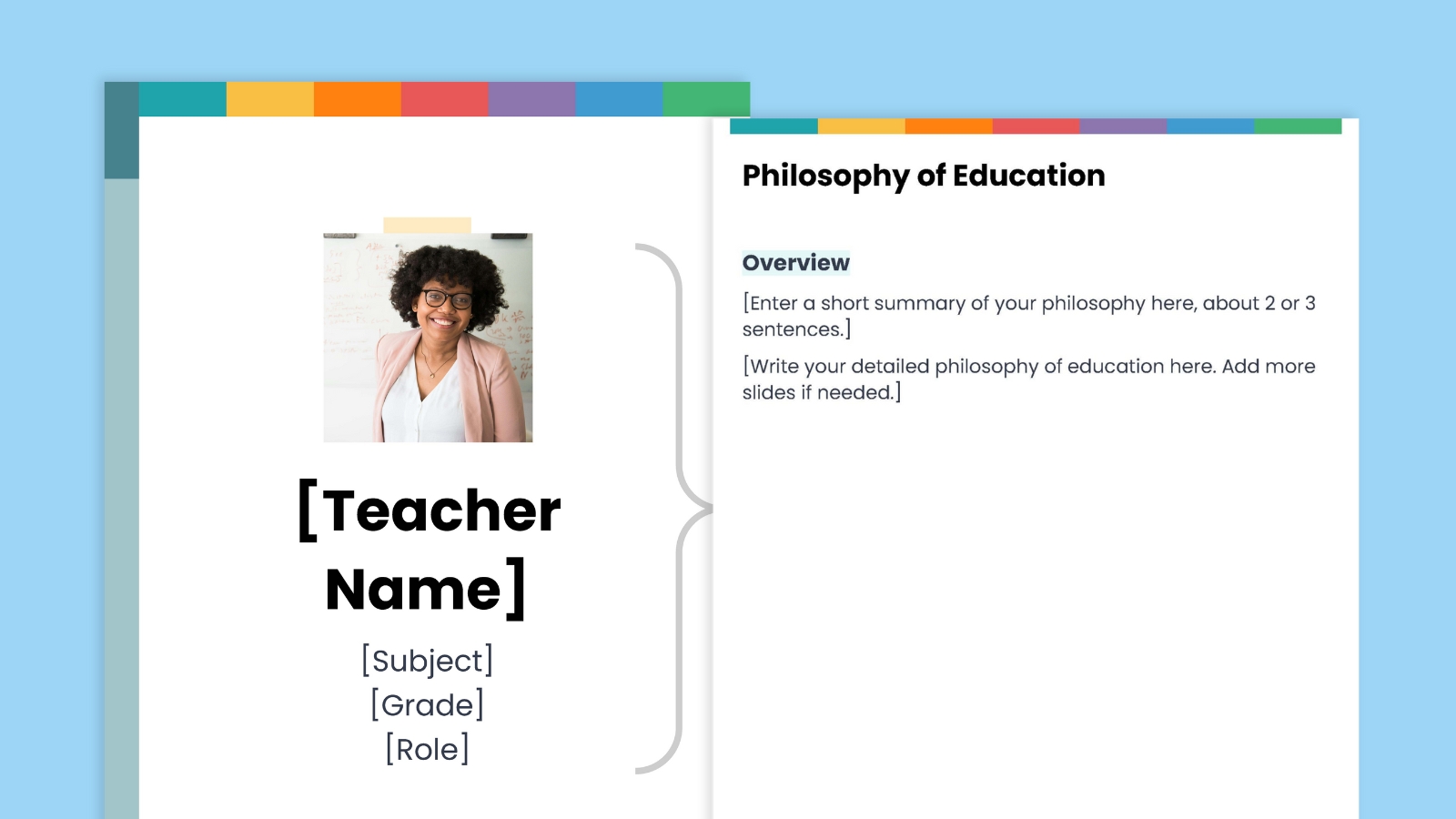America’s education system was a groundbreaking effort to help a growing nation thrive in the 19th century. Now, 200 years later, the world has changed; the horizon looks drastically different. Collectively, we need to redesign our education system to enable all of our children — and, by extension, our nation — to thrive today and tomorrow. “Horizon Three” or “H3” names the future-ready system we need, one that is grounded in equity serving learners’ individual strengths and needs as well as the common good. This series provides a glimpse of where H3 is already being designed and built. It also includes provocations about how we might fundamentally reimagine learning for the future ahead. You can learn more about the horizons framing here.
By: Stephanie DiStasio and David Cook
We’re excited that forty percent of states are taking a bold new look at what it means to be a prepared graduate. About 20 states are currently developing state-level frameworks, called profiles or portraits, that clarify the competencies and experiences students need to succeed beyond high school in today’s rapidly changing world. These portraits can help catalyze relevant learner-centered school and district transformation.
Kentucky and South Carolina were pioneers in this work, and each of us led key aspects of catalyzing transformation. Our states took different approaches to their frameworks, but we both prioritized three things:
- collaboration with communities
- aligning educational goals with workforce
- new approaches to leading change
We’re sharing our journeys and insights here.
Kentucky’s Journey
By: David Cook
As Director of Innovative Learning from 2010-2024, I oversaw multiple pioneering initiatives that had varying levels of success. Kentucky became the first state to build a remote learning program in 2011, a full decade before COVID. It was the first state to develop a district-level innovation zone program in 2013. We were one of the first states to create state-level competencies as the foundation for a Portrait of a Learner (PoL). All of these initiatives had one thing in common: they were initiated at the state level as something for local education agencies “to do”. They were, in short, top-down.
A New Bottom-Up Approach to Community Engagement and Leadership
It wasn’t until the arrival of Dr. Jason Glass as Commissioner of Education for Kentucky in the fall of 2020, that we found the missing piece. Dr. Glass set us on a course of re-imagining large-scale state initiatives by recognizing that such initiatives must be bottom-up and outside-in to be truly effective. The only way for transformational change to occur was to build the system based on what the people wanted for their learners.
His vision began with the idea of United We Learn, a grassroots effort that is built on four key design elements: co-creation, inclusivity, empathy and reciprocity. The United We Learn structure involves a state-level guiding coalition that creates policy recommendations based on the ongoing practice of seventeen local-level coalitions. Together, they map the future of education in Kentucky. You can see a timeline of United We Learn here.
That vision continues today under the leadership of new Kentucky Education Commissioner Dr. Robbie Fletcher. The Kentucky United We Learn Council and these seventeen (17) Local Laboratories of Learning (L3) are on a course to not only shape the future of their own local school systems but to create a major shift in accountability for Kentucky’s entire education system by giving local systems more authority. Each L3 began by building a local coalition of stakeholders using a four-habit design process: co-created, inclusive, empathetic, and reciprocal. That coalition then charted a course to create a local accountability system by community input and focused teacher professional learning on implementing such a system.
These powerful local coalitions of community leadership, combined with the deep commitment of the Kentucky Board of Education (KBE) and the KDE leadership, have led to a longer-term and more rooted vision and goals than any previous large-scale initiative. The foundational work of the L3s and the clear message of these communities and others who had already adopted local PoLs showed that the power was in the local ownership of the PoL. With this information, the KBE adopted the “Model Competencies” framework and made it clear that a district could adopt word for word the state PoL found in the model competencies or they could use the model competencies as a guide to develop their own local PoL. To date, NO district has adopted the model competencies as is. Prior to this decision, only the L3s and a few other districts had developed PoLs. Since this decision by the KDE not to mandate a state PoL, there has been rapid adoption of local PoLs across the state. To date, 133 out of 171 districts (78%) are implementing their own local PoL.

The Future of Innovation: Local Accountability Systems
The PoL is only the first step in transformation. Teaching and learning need to change, as do assessment and accountability. Assessment and accountability in particular have been top-down for decades. We knew the next step was for us to develop a bottom-up, inside-out approach that helped determine how local districts might measure student success on local PoLs.
The KUWL Council and L3s embarked on that work, and in 2022 the U.S. Department of Education awarded Kentucky with a Competitive Grant for State Assessment (CGSA) that is helping Kentucky integrate these competencies into local accountability systems. Kentucky was the ONLY grantee in the 2022 cycle whose grant proposal was focused on local accountability. The CGSA grant has allowed the KUWL Council and the L3s to begin to develop a “system of systems” approach that gives local education agencies and their local Portrait efforts a bigger piece of the “accountability footprint.” Throughout the United We Learn effort, we have seen that locally designed, community-driven approaches to accountability have had greater sustainability than previous efforts, in large part because the local communities have a greater ownership stake in their success. The current plan is to bring this new accountability system to the Kentucky General Assembly in 2026.
Today, dashboards like the Measures of Quality developed by L3 Fleming County around their PoLs are showing the power of local accountability. The dashboard developed by the Greenup County Schools Greenup County Great 8, is now being used to enhance college admissions processes and in securing college scholarships.
Traysea Moresea, Superintendent of the Greenup County Schools: “Our graduates are using the components of their Great 8 as they apply to colleges and our state’s Governor’s Scholars Program. The ability to share the skills they have attained throughout high school is well received by higher ed and scholarship committees.”
South Carolina’s Journey
By: Stephanie DiStasio
In 2012, the Profile of the South Carolina Graduate, born from a grassroots effort —led by a group of district superintendents—identified skills that contribute to success in life and work. The profile was crafted through multiple working groups and ongoing consultation with communities, educators, and businesses with the goal of defining the knowledge, skills, and character traits high school graduates should be able to demonstrate. As a result of this approach, the profile was widely accepted and endorsed by education, workforce, and civic groups in the state. By 2016, the profile was codified into law, making it the standard for all students in the state.
“The approach to creating a graduate profile in South Carolina intentionally included the perspective of practitioners with various roles in education by leveraging existing channels such monthly roundtables through the South Carolina Association of School Administrators (SCASA), regional consortia meetings, and professional learning days. Superintendents also led efforts in their communities to proactively include business leaders across the state throughout the process,” says Dr. Quincie Moore, Executive Director, South Carolina Association of School Administrators (SCASA).
Former South Carolina Superintendent of Education Molly Spearman realized that the creation of a graduate profile was not the destination, but a step along the journey. Under her leadership in 2018, an Office of Personalized Learning was established and began developing prototype competencies to make the profile actionable and measurable. Although this part of the journey was being led by the South Carolina Department of Education, the state approached it as an open partnership with districts and communities. Like Kentucky, we knew that the state DoE needed to lead differently.
Feedback from over 900 stakeholders shaped the competencies as they were being developed. Schools were then encouraged to use the prototype competencies in classrooms through an action research model, gathering real-time feedback from students and teachers. The multi-year, iterative process resulted in a set of measurable competencies that can be used in any content area, all grade levels, and by after-school and community partners. The open nature of the process also resulted in the creation of free professional learning designed by and with teachers; Design Workshops, Inquiry Labs, Competency Fellowships, and self-paced, on-demand modules supported by in-person coaching provided resources to support competency implementation at the classroom level.
Ongoing Collaboration with Communities and Stakeholders
By creating a set of measurable competencies that are content and grade-level agnostic, South Carolina has set the stage to explore credentialing the Profile of the South Carolina Graduate while also honoring the varied approaches to implementation from districts and communities. TransformSC, a collaboration of business, education, policy, and community leaders commissioned multiple research studies from 2020-2023 to ensure the profile has remained relevant and to inform the next steps for the state.
One study, which gathered input from 26,000 businesses in South Carolina, indicated that employers “find the most convincing evaluation of soft skills comes from evidence of work experience or separate grades or certificates for achievement in critical life and career-based skills.” In her 2024 budget request, current State Superintendent Ellen Weaver included $3 million to establish a Character & Resiliency Education (CARE) initiative which aims to “emphasize the unifying traits outlined in the Profile of the South Carolina Graduate. As part of this initiative, the Department of Education is expanding access for districts and schools to partnerships with organizations such as the Maxwell Leadership Foundation iLead student curriculum and the Franklin Covey Leader In Me model. In addition to these partnerships, the department is exploring the potential for credentialing the Profile of the SC Graduate skills and characteristics. There is a recognition that meaningful, portable credentials would enable students to showcase their preparedness for post-graduation opportunities and provide evidence of transferable skills to employers and admissions officers in a format they have indicated they value.

The time has come for each state to change its mindset on what it means to prepare learners for their future. By creating a clear vision for what a prepared graduate looks like based on each state’s context and ensuring the voices of students, educators, communities, and workforce are central to the work of building meaningful credentials, education systems can align their curricula, instruction, and assessments to ensure every student is ready for the next step, whether that’s college, career, or civic life.
In her current role as Senior Advisor for K12 with TSG Advisors – Education, Stephanie DiStasio collaborates with public agencies and private entities to adeptly navigate the intricacies of the modern education ecosystem. Stephanie has 28 years of experience in public education, encompassing roles from classroom teacher to school leader, and most recently as Executive Director of the Division of College & Career Readiness at the South Carolina Department of Education, where she led the work of creating South Carolina’s Flexibility Guide: Possibilities to Personalize Learning and a companion Playbook for Personalized, Competency Based Learning.
David Cook, CEO of Learning Ecosystems Design, has 27 years of experience working with schools and school districts at the state education agency level. He recently retired from the state agency level after 14 years as Director of Innovative Learning for the Kentucky Department of Education (KDE). During his tenure at the KDE he led numerous initiatives, including authoring Kentucky’s award-winning Education Recovery Program (2010, designing and implementing the longest continuously operating statewide remote learning system in the country, Kentucky’s Non-Traditional Instruction Program (2011), co-authoring the first district level innovation zone program in the country, and overseeing a statewide initiative to shift assessment, accountability and the credentialing of learning.
This blog series is sponsored by LearnerStudio, a non-profit organization accelerating progress towards a future of learning where young people are inspired and prepared to thrive in the Age of AI – as individuals, in careers, in their communities and our democracy.
Curation of this series is led by Sujata Bhatt, founder of Incubate Learning, which is focused on reconnecting humans to their love of learning and creating.
The post One Goal, Two Journeys: The Role of Community and Workforce in Defining Graduate appeared first on Getting Smart.
America’s education system was a groundbreaking effort to help a growing nation thrive in the 19th century. Now, 200 years later, the world has changed; the horizon looks drastically different. Collectively, we need to redesign our education system to enable all of our children — and, by extension, our nation — to thrive today and
The post One Goal, Two Journeys: The Role of Community and Workforce in Defining Graduate appeared first on Getting Smart. Future of Learning, Leadership, Learner-Centered, New Pathways, Personalized Learning, Sustainability, Accountability, career readiness, collaboration, H3, leadership, personalized learning, Policies & Systems, portrait of a graduate, superintendent Getting Smart









